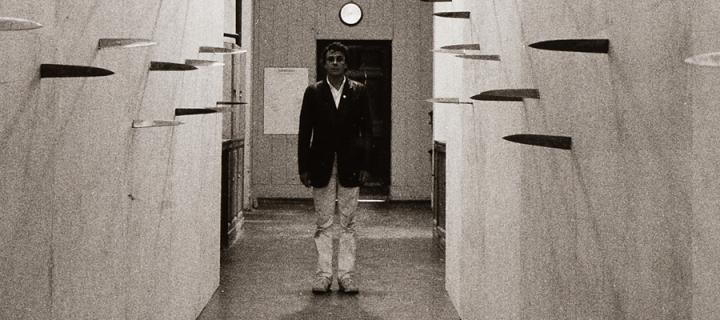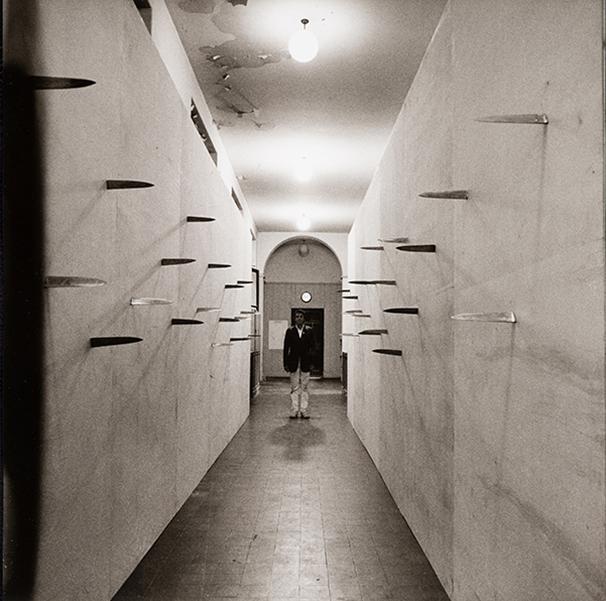12. Günther Uecker in his Sharp Corridor at ECA
At the private view, Günther Uecker’s extraordinary Sharp Corridor was uncaged. There was a chance of being impaled by knives over a celebratory glass of wine.

Günther Uecker (b.1930) was of great importance to Richard Demarco. By the time the Demarco Gallery opened in 1966, Uecker’s work was already familiar to him, aware that he, along with Heinz Mack and Otto Piene, belonged to ‘Gruppe Zero’ or ZERO, a circle that came into being in 1957, after the idea that this was the zero hour from which they would start art afresh, an emancipation from traditional principles and genres of art.
Demarco and Uecker, Dublin, 1967
Demarco would first meet Uecker in Dublin at the opening of the first ‘ROSC’ exhibition in November 1967, which is where the artist told him that he should take very seriously the vibrant and burgeoning art scene in Düsseldorf.
Demarco’s friendship with the artist would ultimately lead him to the studio of Gerhard Richter in January 1970, which is where the idea for what became Strategy: Get Arts was first shaped. At the same time that SGA was held in Edinburgh from 23 August-12 September, Uecker also represented Germany at the 35th Venice Biennale (24 June-25 October, 1970).
Uecker had been hammering thousands of nails into wooden boards covered with linen, as well as pieces of furniture, musical instruments, and household objects since the late 1950s, exploring the possibilities of ‘nail fields’ in a play of light and shadow to create the illusion of movement, as well as through kinetic installations.
In ‘Crossing Borders, Bridging Histories: Christian Weikop in conversation with Richard Demarco’ (Tate Papers, no.31, Spring 2019), Demarco stated that Uecker’s compulsion to use nails related to the advance of pillaging Russian soldiers during the Second World War:
The poor German population, especially the womenfolk, were in complete fear for their lives. The young Uecker, who is exactly my age, boarded up every window and every door of their house, hammering in nails so the house was impregnable.

What Uecker created in situ in ECA was not a ‘nail field’ but something rather more dangerous – a corridor of knives. These butcher knives were positioned sticking out from a false wall of the corridor leading down to the Sculpture Department where Beuys’s The Pack could be found.
Later, the police insisted on the knives being covered and so cages were used.
Uecker quite liked this caged environment, which somehow added to the sinister nature of the piece.
He also explicitly and wittily referred to the police intervention because across the cages he placed a banner that read ‘SHARP CORRIDOR BLUNTED BY POLICE’.
C.W.


